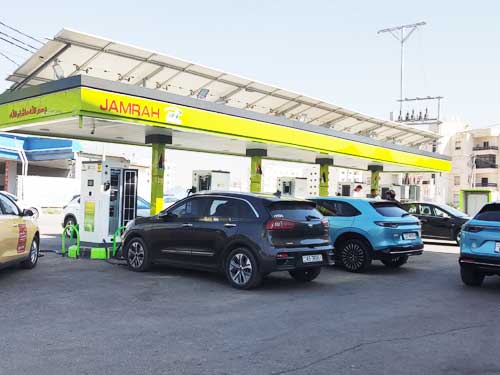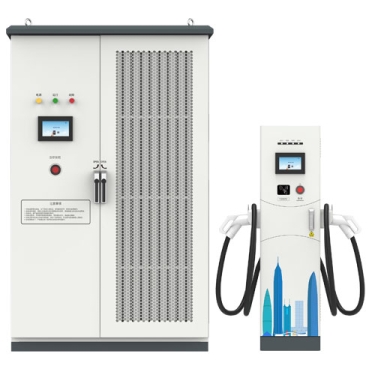- Visitors:0 Views
- Time:2025-03-31
norway ev charging stations
Construction and innovative practice of Norway's ev charging station system
1. Global leading charging network foundation
Norway's new energy vehicle penetration rate has reached 81.6%. In 2025, the number of public chargers will exceed 100,000, forming a three-level charging network of "city + highway + polar regions" covering the entire territory. The core advantages are reflected in:
1.1. Policy-driven: incentive policies such as exemption from purchase tax and permission to use bus lanes have promoted electric vehicle sales to account for more than 65% of new cars;
1.2. Scene integration: 90% of chargers are deployed around supermarkets, fast food restaurants and other life scenes, and users can enjoy free parking and shopping services when charging;
1.3. Polar coverage: 20 ultra-low temperature charging stations have been built in the Arctic Circle, using cold-resistant materials and battery preheating technology to ensure normal operation in a -30℃ environment.
2. Core challenges and breakthrough directions
2.1. Extreme climate adaptation: Winter blizzards and summer high temperatures increase equipment failure rates by 15%, requiring enhanced environmental adaptability design;
2.2. Power grid load pressure: Electric vehicle electricity consumption accounts for 8% of the country's total electricity consumption, and the peak-to-valley difference in some areas reaches 40%;
2.3. User experience optimization: The fragmentation of charging station brands requires the installation of more than 5 apps, and the payment system is not compatible enough.
3. Intelligent solution innovation
3.1. Integrated energy management of photovoltaic storage and charging
Photovoltaic roofs and energy storage systems are deployed at polar sites such as Tromsø, and the power self-circulation is realized in combination with the Hongjiali energy management platform, increasing the average daily power supply of a single station by 37%. The highway supercharging station is equipped with liquid cooling technology, supports 720kW high-power output, and can last 300 kilometers after charging for 5 minutes.

3.2. Dynamic load dispatching system
Using AI algorithms to predict charging demand, pilot "off-peak charging points rewards" in cities such as Oslo, guide 45% of users to shift to the night off-peak period, and reduce the peak pressure of the power grid by 12%. Integrate data from operators such as Recharger and Mer, launch a national unified payment platform, and support NFC and cross-border settlement.
3.3. Modular emergency service network
Develop mobile charging vehicles for polar expedition routes, equipped with V2G bidirectional charging and discharging equipment, and provide 72 hours of emergency power supply for scientific research stations in emergency situations. The split charger design is adopted in the historical city area, and the power module is embedded in the building wall, reducing the ground space occupied by 83%.
4. Ecological collaborative development path
4.1. Profit distribution mechanism: The premium of highway fast charging stations is 4 times that of home charging, attracting energy companies such as Circle K to invest in complex stations, integrating coffee retail and tourism information services;
4.2. Standard system construction: New charging piles are required to be compatible with 5 interfaces such as CCS2 and CHAdeMO, and the equipment life cycle is required to be ≥10 years;
4.3. User participation in design: The "Future Charging Station Design Competition" was held. The winning scheme integrated the service area and the charging area in three dimensions, and the roof garden and transparent atrium improved the stay experience.
Norway has built the world's most efficient charging service system through policy innovation and technological iteration. The technical solutions such as liquid cooling super charging and photovoltaic storage and charging management provided by Hongjiali and other companies provide key support for coping with polar environments and improving energy efficiency. It is expected that by 2027, the ratio of cars to charging chargers in Norway will be optimized to 2:1, continuing to lead the global transportation zero-carbon transformation.
Recommended Reading
- Privacy Policy2023-12-09
Privacy PolicyThis privacy pol
- Happy Chinese New Year! Schedule Notice2023-05-23
Happy Chinese New Year!Schedul
- 2024-European Smart Energy Exhibition2024-06-12
2024-European Smart Energy Exh
- charging station companies2023-09-05
Upgrade your company's infrast
- 32 amp vs 40 amp ev charger2024-07-24
Regarding 32 amp vs 40 amp ev
- best electric vehicle charger2025-03-05
The best electric vehicle charger - Hongjiali: you...
- ev charging time calculator amps2025-01-09
EV Charging time calculator amps is affected by ma...
- how does a dc fast charger work2024-01-23
How does a dc fast charger wor
- how to start a ev charging station business2025-02-27
How to start a ev charging station business? Start...
Hot Products
-
ev supercharger
There are three levels of EV charging; L
Get last price
-
AC Chargring Pile 22KW gr...
ParametersRequirementsGeneral Requiremen
Get last price
-
fast charger for ev
The user-friendly, space-saving DC fast
Get last price
-
50kw dc fast charger
ENC(ANSI/JIS)-DCL060A/B is a compact, re
Get last price



